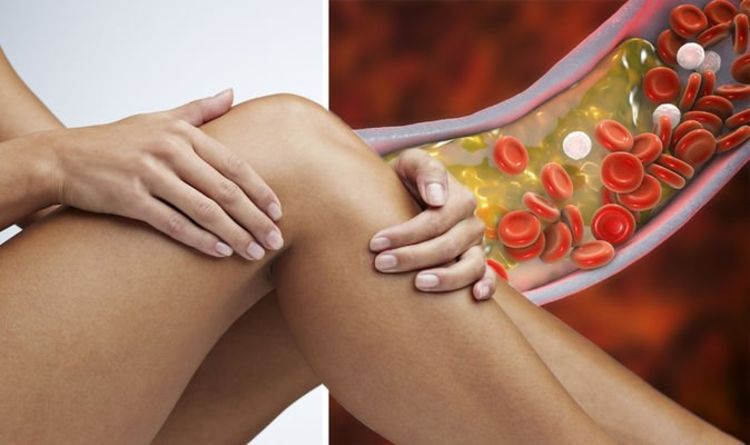High cholesterol: Nutritionist reveals top prevention tips
We use your sign-up to provide content in ways you’ve consented to and to improve our understanding of you. This may include adverts from us and 3rd parties based on our understanding. You can unsubscribe at any time. More info
The pernicious nature of high cholesterol sees it evade the attention of millions, and by the time the condition is picked up, it’s often too late. In the advanced phases of the condition, illness stems from restricted blood flow. This prevents nutrients and oxygen from reaching certain parts of the body, such as the ankles, legs, and feet. At this stage, symptoms may erupt in the skin.
Cholesterol is transported in the blood by two different types of protein, low-density lipoprotein (LDL) and high-density lipoprotein (HDL).
The latter is deemed “good” because it rids the body of harmful LDL cholesterol.
LDL is infamous because it builds up in the walls of the arteries, contributing to plaque formation that narrows the space for blood flow.
The eventual outcome of this is peripheral arterial disease, which gives rise to a host of complications.
READ MORE: High cholesterol: The ‘sudden’ symptom that can ‘lead to surgery to remove a leg or death’

The Midwest Institute for Non-surgical Therapy outlines some of the telltale signs of peripheral arterial disease (PAD) on the skin.
The health body states that dry and itchy skin may result from limited restricted blood flow.
It explains: “People with PAD may exhibit one or several changes to the skin of the legs, ankles and feet.
“These changes often start as mild problems but, with time, can lead to more severe symptoms.
“Mild changes such as the skin feeling cool to the touch and becoming dry and itchy. Some people will notice poor toenail growth.”
These skin changes typically occur on the legs, ankles and feet, and might remain mild in the initial stages.
As the condition worsens, more severe symptoms may erupt, however.
The health body says other symptoms may include “moderate changes such as increased redness and swelling”.
It continues: “The skin can also become pigmented and thick because of lipodermatosclerosis.

“This a type of inflammation of the layer of fat under the skin and may involve one or both legs.
“Other moderate changes include decreased leg hair growth as tissues start to die.”
How to avoid PAD
The NHS explains that, although there is no cure for PAD, a combination of lifestyle changes and medicine can go a long way to reduce symptoms.

Early treatment is essential, as extreme cases call for surgery if the initial treatment fails to reduce complications.
Two of the most important lifestyle measures to treat PAD are avoiding cigarette smoking and exercising regularly.
The Mayo Clinic adds: “A healthy diet low in saturated fat can help control your blood pressure and cholesterol levels, and that can lower your risk of atherosclerosis.”
What’s more, some over-the-counter cold remedies that contain pseudoephedrine constrict your blood vessels and may increase your PAD symptoms.
Source: Read Full Article
